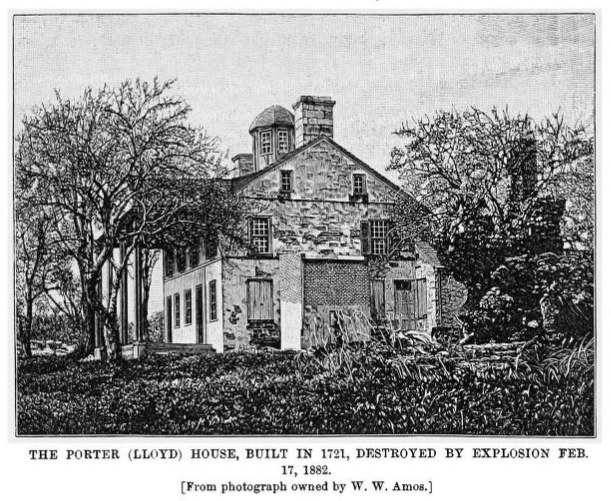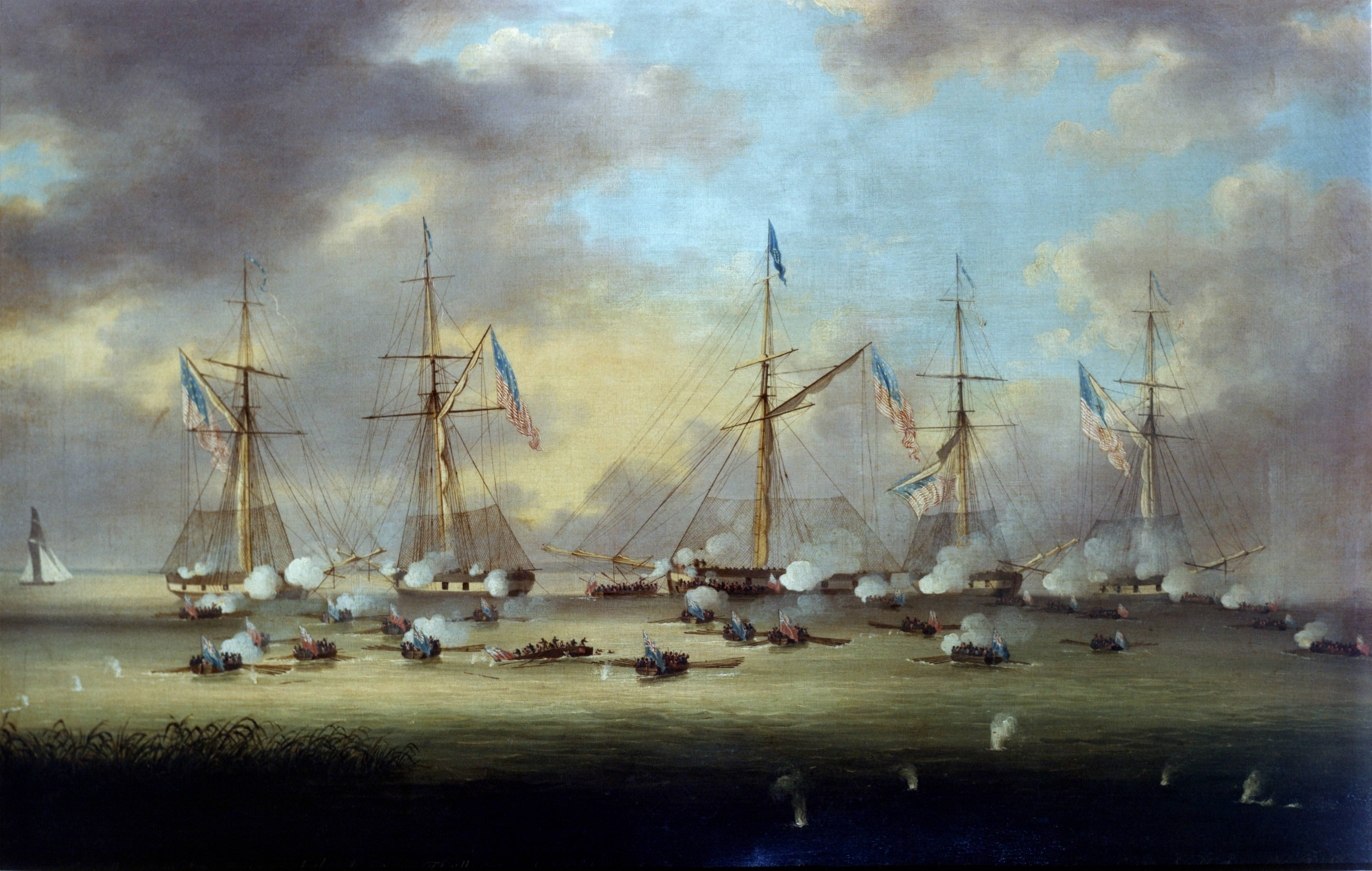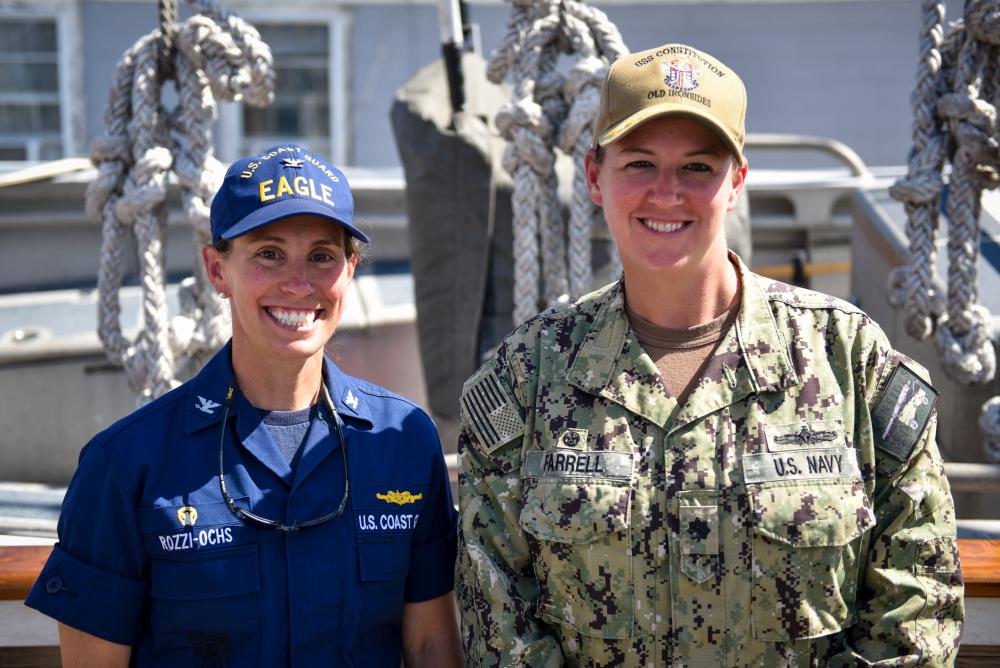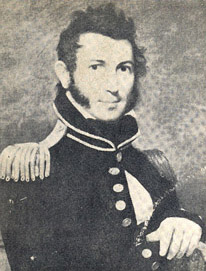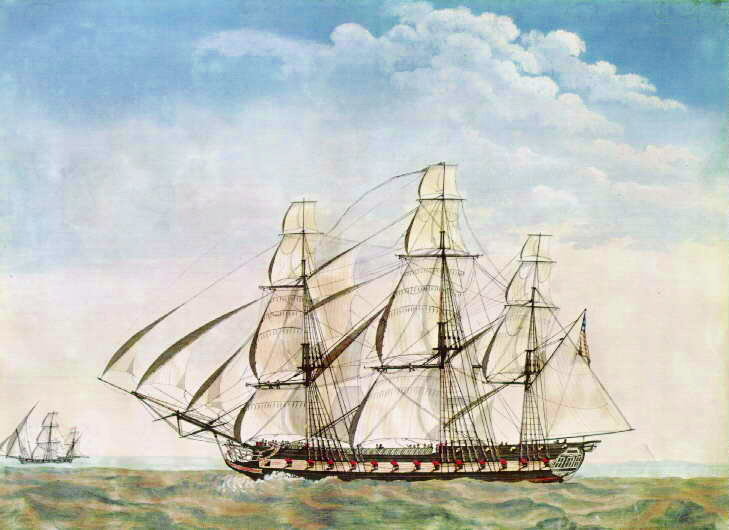|
David Porter (naval Officer)
David Porter (February 1, 1780 – March 3, 1843) was an officer in the United States Navy in the rank of captain and the honorary title of commodore. Porter commanded a number of U.S. naval ships. He saw service in the First Barbary War, the War of 1812 and in the West Indies. On July 2, 1812, Porter hoisted the banner "Free trade and sailors' rights" as captain of USS ''Essex''.Gilje, Paul A. Free Trade and Sailors' Rights in the War of 1812', Cambridge, Cambridge University Press, 2013, , p. 1. The phrase resonated with many Americans. Porter was later court martialed; he resigned and then joined and became commander-in-chief of the Mexican Navy. Porter County, Indiana was named after him. Early life and education Born in Boston, Massachusetts, Porter served in the Quasi-War with France first as midshipman aboard , participating in the capture of '' L'Insurgente'' on February 9, 1799; then as 1st lieutenant of ; and finally in command of USS ''Amphitheatre''. During the ... [...More Info...] [...Related Items...] OR: [Wikipedia] [Google] [Baidu] |
List Of Ambassadors Of The United States To Turkey
The United States has maintained many high level contacts with Turkey since the 19th century. Ottoman Empire Chargé d'Affaires * George W. Erving (before 1831) * David Porter (September 13, 1831 – May 23, 1840) Minister Resident * David Porter (May 23, 1840 – March 3, 1843) * Dabney Smith Carr (February 29, 1844 – October 20, 1849) *George Perkins Marsh (March 11, 1850 – December 19, 1853) * Carroll Spence (February 9, 1854 – December 12, 1857) * James Williams (May 27, 1858 – May 25, 1861) *Edward Joy Morris (October 22, 1861 – October 25, 1870) *Wayne MacVeagh (October 25, 1870 – June 10, 1871) * George H. Boker (March 25, 1872 – May 1, 1875) * Horace Maynard (June 12, 1875 – July 15, 1880) *James Longstreet (December 14, 1880 – April 29, 1881) *Lewis Wallace (September 6, 1881 – September 4, 1882) Envoy Extraordinary and Minister Plenipotentiary *Lewis Wallace (September 4, 1882 – May 15, 1885) *Samuel S. Cox (August 25, 1885 – September 14, 1886 ... [...More Info...] [...Related Items...] OR: [Wikipedia] [Google] [Baidu] |
New Orleans Squadron
The New Orleans Squadron or the New Orleans Station was a United States Navy squadron raised out of the growing threat the United Kingdom posed to Louisiana during the War of 1812. The first squadron consisted of vessels and was mostly defeated during the war. Afterward, new ships were stationed at New Orleans which engaged in counter-piracy operations for over twenty years. The New Orleans Squadron was eventually merged with the Home Squadron. History War of 1812 Originally commanded by Daniel Patterson in 1814, the squadron consisted of fifteen vessels, including the schooners USS ''Carolina'' and USS ''Sea Horse'', the two small sloops-of-war USS ''Alligator'' and USS ''Tickler'' along with several Jeffersonian class gunboats. On December 13, 1814, the ''Sea Horse'' fought with seven British longboats from a British flotilla of 42 armed longboats which was heading to Lake Borgne. The next day, the longboat flotilla defeated the squadron's five gunboats under Thomas ap Ca ... [...More Info...] [...Related Items...] OR: [Wikipedia] [Google] [Baidu] |
Captain (United States O-6)
In the United States Navy, United States Coast Guard, United States Public Health Service Commissioned Corps (USPHS), and National Oceanic and Atmospheric Administration Commissioned Officer Corps (NOAA Corps), captain is the senior-most commissioned officer rank below that of flag officer (i.e., admirals). The equivalent rank is colonel in the United States Army, Air Force, Space Force, and Marine Corps. Reflecting its nautical heritage, the term ''captain'' is used as a military title by more junior officers who command a commissioned vessel of the Navy, Coast Guard, or National Oceanic and Atmospheric Administration (NOAA) ship of patrol boat size or greater. Officers below O-6 who command aviation squadrons (typically O-5 commanders) usually use the less formal title "skipper". Insignia File:US-O6 insignia.svg, USN, USCG, USPHSCC, and NOAACOC collar, cover (hat), or shoulder rank insignia (on select uniforms) File:US Navy O6 insignia.svg, The eagle, shoulder boards, an ... [...More Info...] [...Related Items...] OR: [Wikipedia] [Google] [Baidu] |
Battle Of Valparaiso
A battle is an occurrence of combat in warfare between opposing military units of any number or size. A war usually consists of multiple battles. In general, a battle is a military engagement that is well defined in duration, area, and force commitment. An engagement with only limited commitment between the forces and without decisive results is sometimes called a skirmish. The word "battle" can also be used infrequently to refer to an entire operational campaign, although this usage greatly diverges from its conventional or customary meaning. Generally, the word "battle" is used for such campaigns if referring to a protracted combat encounter in which either one or both of the combatants had the same methods, resources, and strategic objectives throughout the encounter. Some prominent examples of this would be the Battle of the Atlantic, Battle of Britain, and Battle of Stalingrad, all in World War II. Wars and military campaigns are guided by military strategy, whereas ba ... [...More Info...] [...Related Items...] OR: [Wikipedia] [Google] [Baidu] |
Nuku Hiva Campaign
The Nuku Hiva Campaign was an armed conflict between the United States and the Polynesian inhabitants of Nuku Hiva during the War of 1812. It occurred in 1813, following Captain David Porter's decision to sail his fleet to the island for repairs before continuing his raid against British shipping. Upon arrival, the Americans became involved in a tribal war and allied themselves with the Te I'i people against the Happah and Tai Pi clans. Background Operations in the Pacific began in early 1813 when Captain Porter entered the Pacific, via Cape Horn, in the thirty-two gun frigate . Originally Porter was assigned to rendezvous with two other warships but both encountered enemy resistance before their meeting and Porter went around the Horn alone. The mission was to harass the British whaling industry off South America and around the Galápagos Islands. For months the Americans cruised the South Seas and they captured several British whalers that they placed under navy command. ... [...More Info...] [...Related Items...] OR: [Wikipedia] [Google] [Baidu] |
Action Off Charles Island
The action off Charles Island was a naval battle fought during the War of 1812 in the summer of 1813 off Charles Island in the Galapagos. An American squadron of three vessels attacked three British armed whalers, and captured them. The engagement was notable for being one of the few to occur in the Pacific Ocean during the war and involved United States Marine Lieutenant John M. Gamble, the first U.S. Marine to command an American warship. Background In the War of 1812 between the United Kingdom and the United States, American Captain David Porter, in the thirty-six gun frigate , led a fleet of armed vessels in the South Pacific in a commerce raiding operation. At the time of the action, ''Essex'' was accompanied by two smaller vessels, recently captured from the British and classified as sloops-of-war by Captain Porter. They were the 10-gun of 338 tons burthen and the 8-gun of 280 tons burthen. Porter had sent the rest of his fleet to Valparaiso, Chile, to be sold while ... [...More Info...] [...Related Items...] OR: [Wikipedia] [Google] [Baidu] |
USS Essex (1799)
The first USS ''Essex'' of the United States Navy was a 36-gun or 32-gun sailing frigate that participated in the Quasi-War with France, the First Barbary War, and in the War of 1812. The British captured her in 1814 and she then served as HMS ''Essex'' until sold at public auction on 6 June 1837. Service history The frigate was built by Enos Briggs, Salem, Massachusetts, at a cost of $139,362 subscribed by the people of Salem and Essex County, to a design by James Hackett. ''Essex'' was armed with mostly short-range carronades that could not hope to match the range of 18- and 24-pounder naval guns. She was launched on 30 September 1799. On 17 December 1799 she was presented to the United States Navy and accepted by Captain Edward Preble Edward Preble (August 15, 1761 – August 25, 1807) was a United States naval officer who served with great distinction during the 1st Barbary War, leading American attacks on the city of Tripoli and forming the officer corps that w ... [...More Info...] [...Related Items...] OR: [Wikipedia] [Google] [Baidu] |
War Of 1812
The War of 1812 (18 June 1812 – 17 February 1815) was fought by the United States of America and its indigenous allies against the United Kingdom and its allies in British North America, with limited participation by Spain in Florida. It began when the United States declared war on 18 June 1812 and, although peace terms were agreed upon in the December 1814 Treaty of Ghent, did not officially end until the peace treaty was ratified by Congress on 17 February 1815. Tensions originated in long-standing differences over territorial expansion in North America and British support for Native American tribes who opposed US colonial settlement in the Northwest Territory. These escalated in 1807 after the Royal Navy began enforcing tighter restrictions on American trade with France and press-ganged men they claimed as British subjects, even those with American citizenship certificates. Opinion in the US was split on how to respond, and although majorities in both the House and ... [...More Info...] [...Related Items...] OR: [Wikipedia] [Google] [Baidu] |
Second Battle Of Tripoli Harbor
The Second Battle of Tripoli Harbor was a naval action that occurred during the American naval blockade which took place in Tripoli Harbor on July 14, 1804. The battle was part of the First Barbary War between forces of the United States and the forces of the Eyalet of Tripolitania. Background Commodore Edward Preble had assumed command of the U.S. Mediterranean Squadron in 1803. By October of that year Preble had begun a blockade of Tripoli harbor. The first significant action of the blockade came on October 31, when ran aground on an uncharted coral reef and the Tripolitan Navy was able to capture the ship along with its crew and Captain William Bainbridge. ''Philadelphia'' was turned against the Americans and anchored in the harbor as a gun battery. On the night of February 16, 1804, a small contingent of U.S. Marines in a captured Tripolitan ketch rechristened and led by Lieutenant Stephen Decatur, Jr. were able to deceive the guards on board ''Philadelphia'' and float ... [...More Info...] [...Related Items...] OR: [Wikipedia] [Google] [Baidu] |
First Barbary War
The First Barbary War (1801–1805), also known as the Tripolitan War and the Barbary Coast War, was a conflict during the Barbary Wars, in which the United States and Sweden fought against Tripolitania. Tripolitania had declared war against Sweden and the United States over disputes regarding tributary payments made by both states in exchange for a cessation of Tripolitatian commerce raiding at sea. United States President Thomas Jefferson refused to pay this tribute. Sweden had been at war with the Tripolitans since 1800. Background and overview Barbary corsairs and crews from the quasi-independent North African Ottoman provinces of Algiers, Tunis, Tripoli, and the independent Sultanate of Morocco under the Alaouite dynasty (the Barbary Coast) were the scourge of the Mediterranean. Capturing merchant ships and enslaving or ransoming their crews provided the rulers of these nations with wealth and naval power. The Trinitarian Order, or order of "Mathurins", had operated fr ... [...More Info...] [...Related Items...] OR: [Wikipedia] [Google] [Baidu] |
Action Of 1 January 1800
The action of 1 January 1800 was a naval battle of the Quasi-War that took place off the coast of present-day Haiti, near the island of Gonâve in the Bight of Léogâne. The battle was fought between an American convoy of four merchant vessels escorted by the United States naval schooner , and a squadron of armed barges manned by Haitians known as picaroons. A French-aligned Haitian general, André Rigaud, had instructed his forces to attack all foreign shipping within their range of operations. Accordingly, once ''Experiment'' and her convoy of merchant ships neared Gonâve, the picaroons attacked them, capturing two of the American merchant ships before withdrawing. ''Experiment'' managed to save the other two ships in her convoy, and escorted them to a friendly port. On the American side, only the captain of the schooner ''Mary'' was killed. Though the picaroons took heavy losses during this engagement, they remained strong enough to continue wreaking havoc among Americ ... [...More Info...] [...Related Items...] OR: [Wikipedia] [Google] [Baidu] |
